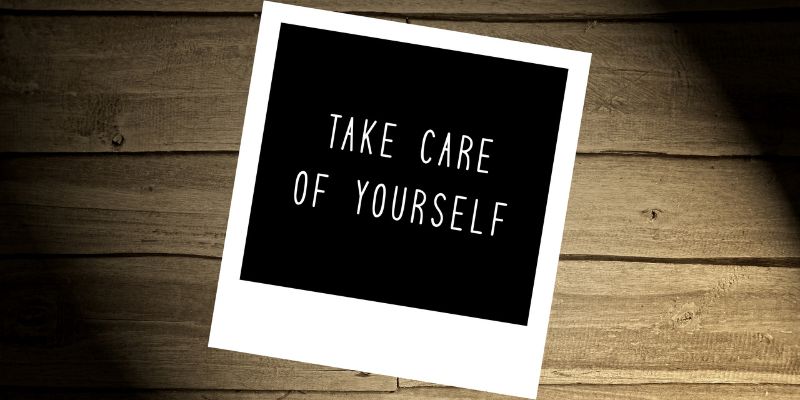
The Difference Between Implosive and Explosive Anger
Anger is a universal emotion, a part of the human experience. But the way we express it varies greatly. In this blog, we’ll explore the topic of anger expression, focusing on two distinct but equally destructive paths – explosive and implosive anger.
Anger, when not managed or channeled effectively, can disrupt our lives and relationships. Explosive anger often causes harm to others and the individual. On the other hand, implosive anger is more like a silent implosion, where the anger is internalized, potentially causing harm over time.
The consequences of these unproductive expressions of anger are profound, affecting our relationships, well-being, and overall quality of life. It’s vital to understand the differences between these two forms of anger and the havoc they can wreak to address anger more healthily.
Join us as we explore the difference between explosive and implosive anger. By the end, you’ll have a deeper understanding of how to control anger in a way that benefits you and those around you.
Explosive Anger

Explosive anger is an intense experience, often leaving individuals and their surroundings shaken and scarred.
The impact of explosive anger is profound. It can result in damaged relationships, broken trust, and emotional scars that take time to heal. Those around someone experiencing explosive anger often feel like they’re walking on eggshells, living in fear of triggering another eruption.
The heightened anxiety and fear associated with explosive anger can have long-term consequences, leading to stress-related health issues, strained interpersonal connections, and a reduced quality of life.
By understanding the nature of explosive anger, we can address it constructively, fostering healthy emotional outlets and communication strategies that benefit the individual and those they interact with.
Implosive Anger

Implosive anger is the quiet and often unnoticed cousin of explosive anger. This type of anger doesn’t cause volatile outbursts. Instead, it builds up internally, creating a pressure of emotions that can eventually cause damage.
Individuals with implosive anger tend to internalize their emotions. They often fear external judgment or consequences, so they swallow their anger, allowing it to fester.
Understanding implosive anger is essential for fostering healthier emotional expression, as it can lead to healthier outlets for managing these emotions and ultimately prevent them from reaching a boiling point.
Transition from Implosive to Explosive Anger
Implosive anger is regarded as accumulating emotional suppression unseen beneath the surface. However, it’s essential to recognize the severity of suppressed anger. Implosive anger has a breaking point; if left unaddressed, it can transition into explosive anger over time.
Imagine a patient parent gently directing a child’s misbehavior. They may tolerate the child’s actions, but frustration steadily builds. Eventually, this patience reaches its limits, and the parent’s response turns explosive. Similarly, implosive anger operates under the surface, but when the internal pressure becomes too much to contain, it explodes outward.
This transition from implosive to explosive anger underscores the importance of addressing anger constructively. Unexpressed anger, when left unattended, has a way of manifesting itself outwardly. It’s not a question of if but when this emotional transformation will occur.
To prevent the potential damage caused by this transition, it’s crucial to understand the signs of implosive anger and, more importantly, to develop healthier outlets for emotional expression, promoting emotional well-being and maintaining healthy relationships with others.
Impact on Individuals and Children
The impact of living with explosively angry parents is profound. It often leads to a complex series of emotional responses, including the expression of anger. Children growing up in such environments may internalize the chaos, learning to fear external judgment or the consequences of explosively expressing their anger; they may suppress their emotions, leading to implosive anger.
The consequences of this internalization can be severe. Implosive anger in children may manifest as depression, self-harm, substance abuse, or loneliness. It’s a silent, internal struggle that can persist into adulthood, affecting their emotional well-being and relationships.
The connection between the home environment and children’s behavior is undeniable. Children often model the behaviors they observe in their parents, both positive and negative. Growing up with explosively angry role models can shape their emotional responses and coping strategies, potentially perpetuating the cycle of anger expression within the family.
Understanding these consequences is essential for breaking this cycle and addressing anger constructively. It highlights the urgency of creating a more emotionally healthy environment with open communication, empathy, and healthier outlets for emotional expression, ensuring a brighter emotional future for children and individuals alike.
Prevention and Anger Management
Prevention and effective anger management are essential for maintaining healthy relationships and personal well-being. Uncontrolled anger can harm the individuals experiencing it and those in their proximity.
Following are the crucial concepts of prevention and action, highlighting practical ways to manage anger effectively.
1. Identify Angry Triggers
Identifying your anger triggers is about understanding the causes of anger issues, and recognizing the situations, people, or circumstances that consistently ignite the flames of anger within you.
These triggers can vary widely from person to person; it might be a particular type of stress, certain individuals, or even specific environments that set off your anger. When you know these triggers, you can take proactive steps to avoid or mitigate them.
This knowledge empowers you to anticipate potentially anger-inducing situations, plan your responses, and ultimately regain control over your emotional responses.
2. Understand “Automatic Thoughts” in Certain Situations
Automatic thoughts are the swift, instinctive interpretations we make in response to certain situations. In anger management, understanding these automatic thoughts is crucial. It’s about recognizing the knee-jerk reactions that intensify your anger.
By identifying and challenging these thoughts, you can reframe your perspective. For example, if you automatically interpret criticism as a personal attack, you can learn to reevaluate the situation and respond more rationally.
This cognitive approach to anger management allows you to regain control over your emotions by changing how you perceive and respond to anger-inducing situations. It’s a powerful tool for fostering healthier emotional reactions.
3. Take Care of Yourself

Managing anger isn’t only about addressing emotional triggers but also about maintaining your physical and emotional well-being.
Taking care of yourself involves regular exercise, a balanced diet, sufficient sleep, and relaxation techniques. When your body and mind are in good health, you can manage stress and emotional triggers better.
Physical activity, for example, releases endorphins, which can reduce stress and anger. A well-balanced diet provides the necessary nutrients for emotional stability. Adequate sleep and relaxation techniques help you stay emotionally balanced and react rationally to situations.
Self-care, in the context of anger management, is like the foundation of a sturdy building – it provides the stability necessary for effective anger control.
4. Apply Boundaries with People
Setting and maintaining boundaries is an essential aspect of anger management. It’s about clearly communicating what you will. It won’t tolerate others, ensuring your needs are met, and you’re not subjected to unnecessary stressors or frustrations.
Boundaries can manifest in various ways, from articulating your limits in personal relationships to establishing professional boundaries at work. You establish a framework for healthy interactions by defining and communicating your boundaries.
This helps in preventing situations that may trigger your anger and provides clarity for others regarding what is acceptable behavior in their dealings with you.
Effective boundary setting is like a protective shield, safeguarding you from unnecessary anger-provoking situations.
5. Surround Yourself With Positive and Supportive People
The people you surround yourself with significantly influence your emotional well-being. Positive and supportive individuals can create an environment where anger is less likely to flourish. These relationships provide a safety net when you’re dealing with difficult emotions.
Whether it’s friends, family, or colleagues, a supportive network can offer emotional assistance and guidance when facing challenging situations. They can provide a fresh perspective, a sympathetic ear, or simply a sense of comfort during moments of anger.
By nurturing these relationships and surrounding yourself with those who bring positivity and support into your life, you create a buffer against anger-inducing environments and gain the strength to address your emotions constructively. Your social circle becomes a haven, promoting well-being and healthier emotional expression.
6. Opt for an Anger Management Course
In some cases, managing anger effectively may require professional guidance. Anger management courses are structured programs designed to equip individuals with the tools and strategies to understand and control their anger.
These courses often include therapy, group discussions, and practical exercises to identify anger triggers, coping mechanisms, and healthier ways to respond to anger. Seeking professional help is a proactive step toward addressing anger constructively, especially when anger has become a persistent issue.
Mastering Anger offers comprehensive courses that provide the knowledge, skills, and support needed to navigate the complex terrain of anger, fostering healthier emotional expression and improved overall well-being.
Conclusion
When it comes to understanding the difference between explosive and implosive anger, we explore the symptoms, impact, and major differences to distinguish both conditions.
It’s crucial to understand that both expressions of anger, if left unchecked, can lead to profound consequences, affecting individuals as well as their friends and family.
Recognizing and addressing anger constructively is not just a matter of emotional health; it’s the basis of healthier relationships and personal well-being.
Explosive anger leaves scars, straining connections and fostering fear. Implosive anger can silently corrode the individual, leading to self-harm and depression.
The impacts of these unproductive expressions of anger extend far beyond the individual, especially when children are involved. Children growing up in environments where anger is expressed explosively or suppressed implosively often mirror these behaviors, perpetuating the cycle.
But there’s hope. We can break this cycle by proactively managing anger and fostering open communication, empathy, and healthier outlets for emotional expression. We can create environments that nurture emotional well-being and contribute to stronger, more harmonious relationships.
Remember, the journey to healthier emotional expression is ongoing, but with self-awareness and a commitment to constructive change, it’s a path that leads to a more fulfilling, emotionally intelligent, and interconnected life.





Responses